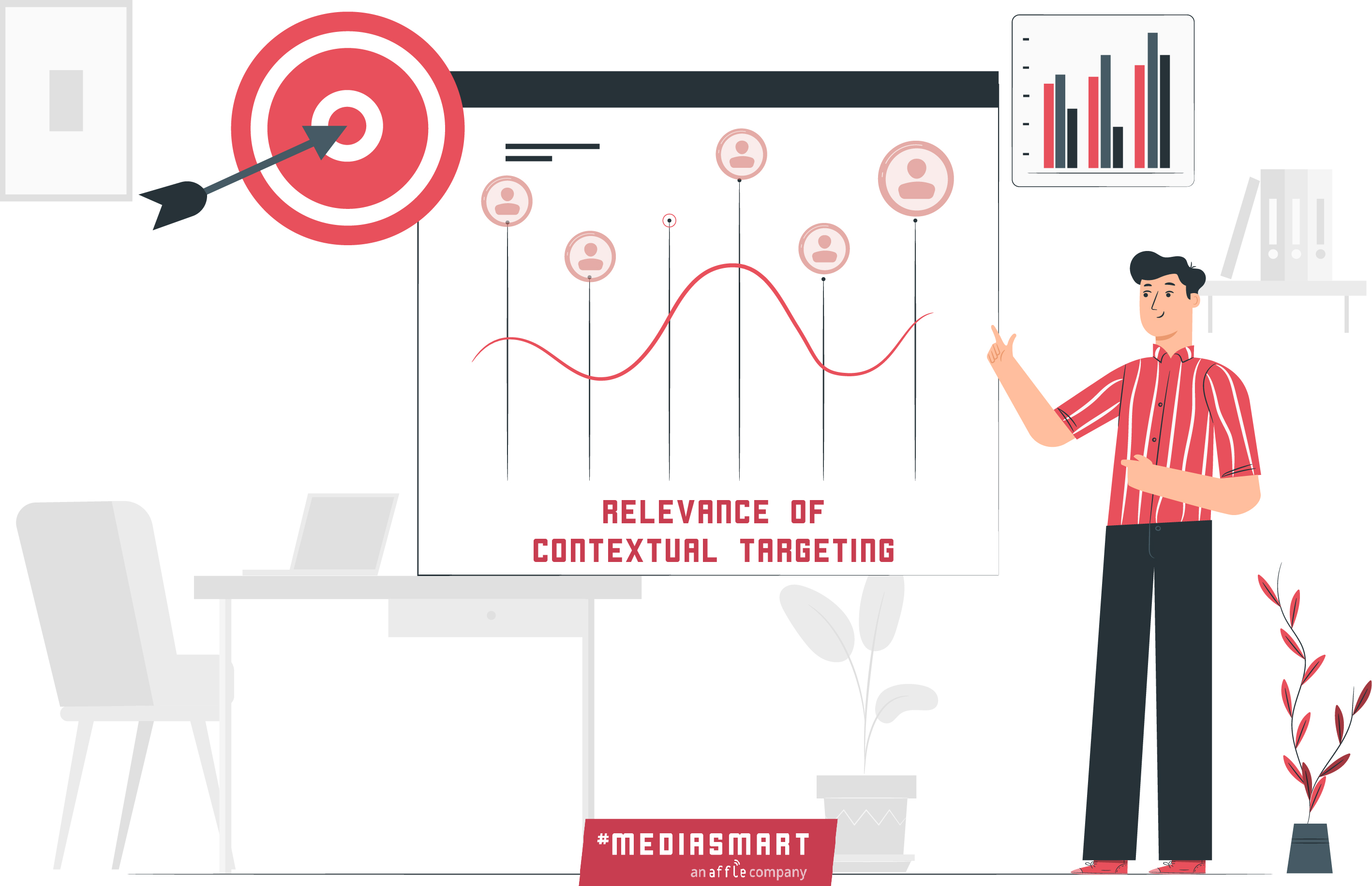Blog
Announcements, analysis and opinions on industry trends around the mobile programmatic world.

Subscribe now, and receive the latest programmatic content directly on your inbox!
Thank you for subscribing to our newsletter
At mediasmart, we have always been cookieless. Now that this approach is becoming standard, we decided to tell you how contextual targeting can become one default targeting method on your programmatic campaign checklist!
The IAB defines contexts as: "Contextual targeting is a form of advertising that chooses to serve an ad based on the content and environment that the ad will appear in, as opposed to data on the user that the ad is being served to."[1] To put it another way, contextual targeting looks at the terms, keywords, or metadata on a website or an app to see if they're relevant to the product or service a company offers before delivering an ad.
If that didn’t already catch your attention, let’s look at a few more reasons why you should adopt contextual advertising:
Non-user centric Targeting Practices:
In the previous environments, behavioural targeting served as the primary strategy. Growing constraints on mobile identifier gathering are limiting the amount of data that advertisers can have to identify user behaviour and hence limiting their ability to benefit from behavioural targeting. On the other hand, contextual targeting doesn’t rely on user data. It protects users’ privacy and ensures that ads stay relevant.
Privacy-centric policies:
The users today have become highly focused on privacy and this calls for the marketers to rely on tried-and-true, privacy-friendly approaches. To survive in this cookie and identifier free environment, advertisers need to turn to AI to help them understand the content that their users are engaging with and start using contextual targeting. Contextual advertising can help to create improved advertising experiences with machine learning algorithms to broaden targeting and incorporate contextually relevant terms.
Brand Safety:
Because contextual advertising places ads based on publishers’ information rather than user behaviour and search history, it avoids ad placements that could harm your brand's reputation. Advertisers can safe-keep their brand as this method serves your ad on the publishers that only have relevant content. The possibility to suppress particular contexts like ‘Violence’ or ‘Drugs’ also exists. This means you'll never have to worry about your brand being associated with controversial figures or content.
Contextual Connected TV (CTV) :
Targeting contexts on CTV is done the same way you target contexts for other devices. With hundreds of players, the emerging CTV landscape creates unique and complex global challenges for advertisers. While many of the current CTV targeting solutions are manual, Peer39 has developed a solution catered for CTV, that mediasmart has integrated. We can provide a granular level of detail and control and clear options for buying OTT inventory on CTV devices.
Specialized Targeting:
All marketers, but notably those who want very specialized or specialist targeting, need the capability to target niche contexts. Contextual also improves the ability to identify segments when no other data is available, as they provide a context in which the bid will be placed.
Positive effects on campaign performance:
If a user is reading a blog about cooking, the use of contextual targeting could serve them ads for shopping for kitchenware, or attending a cooking class, as it’s highly likely at that time the user is thinking about these related products or services. In this manner, contextual targeting positively affects campaigns performance, as an ad placed next to the right content lifts its value and that message gets to more receptive users.
Global Reach:
Contextual targeting adds an additional layer of targeting with its capabilities, such as:
- Semantic Categories to choose from, that could include things such as seasonal segments (i.e. Christmas, Diwali, Back-to-school...), industry verticals, various themes (Pandemics, Natural disasters...) or languages.
- Weather: areas with specific weather conditions.
- The sentiment of the texts: identifies and categorizes opinions expressed in a piece of text.
- Zip/Postal Code categories.
Are you looking to start with contextual advertising? Reach out to our experts and try contextual targeting today!
[1] Definition from The IAB Europe Guide to Contextual Advertising.
Topics: Contextual CTV, Contextual targeting

